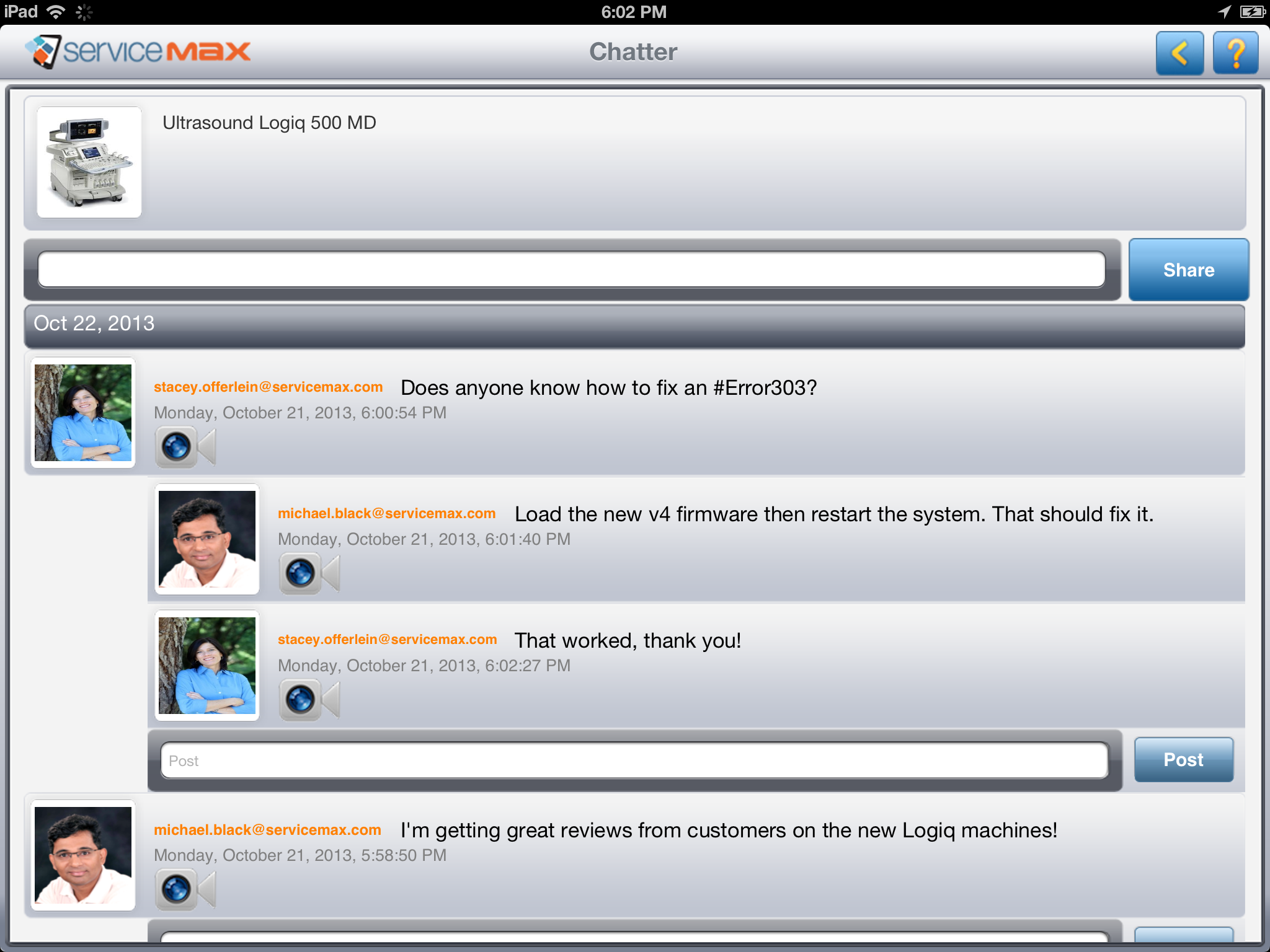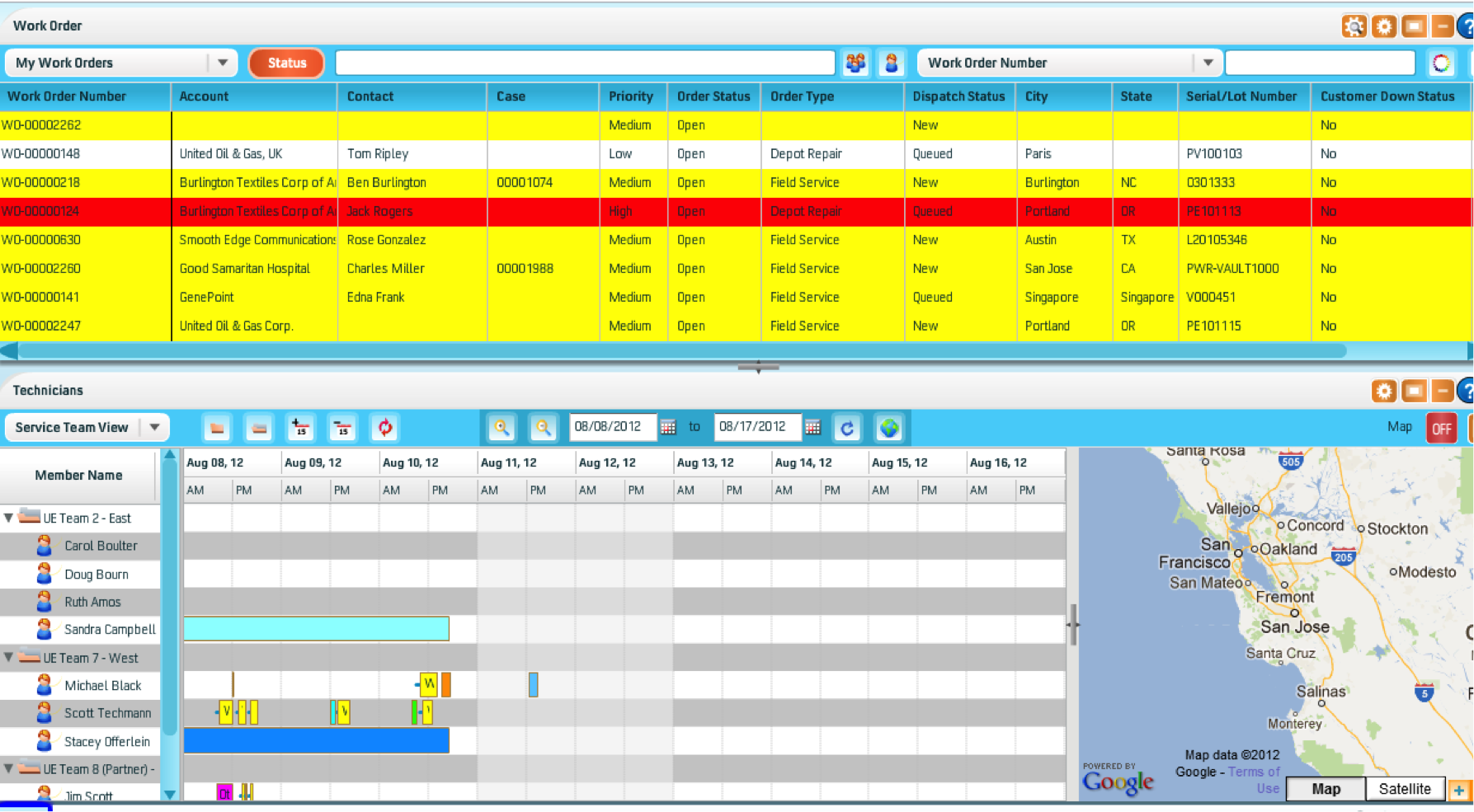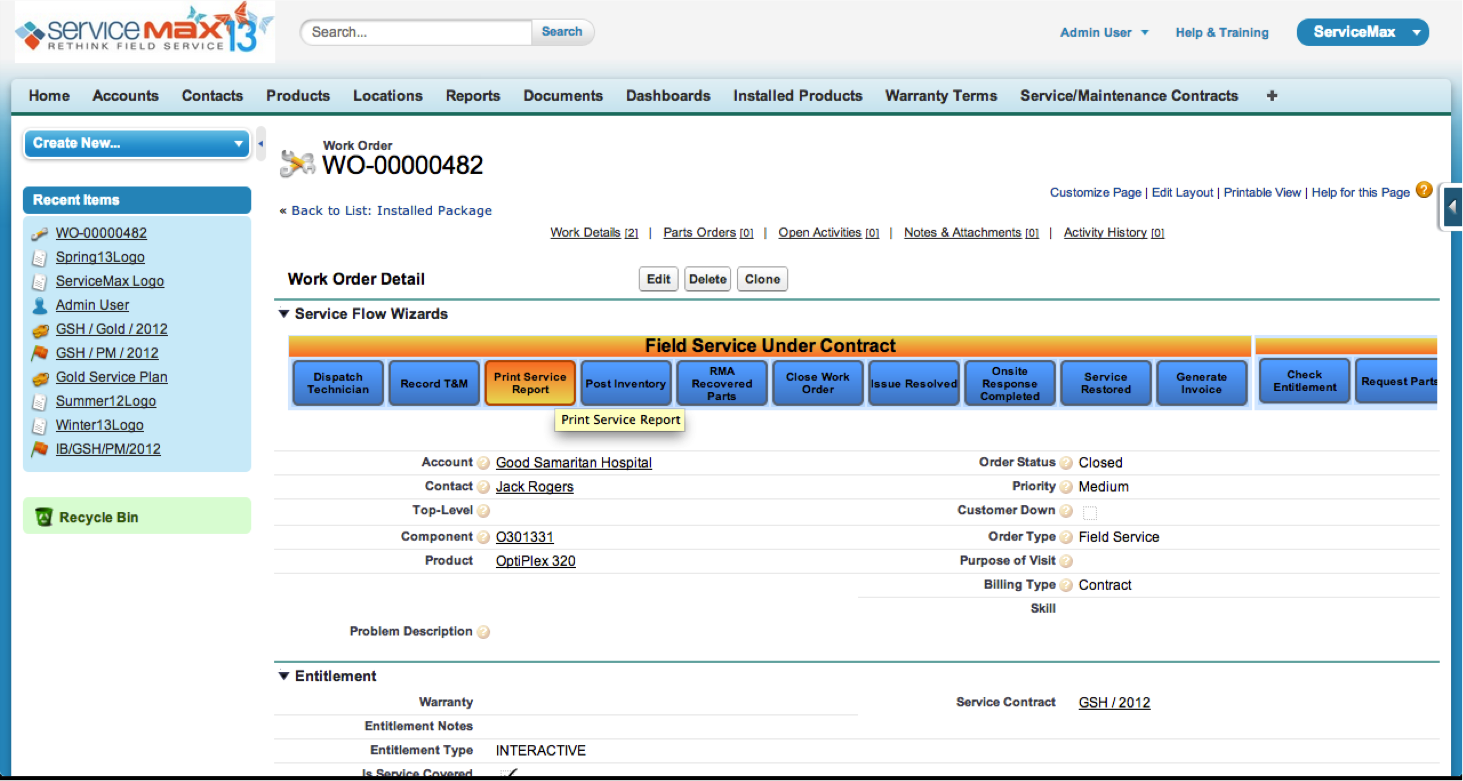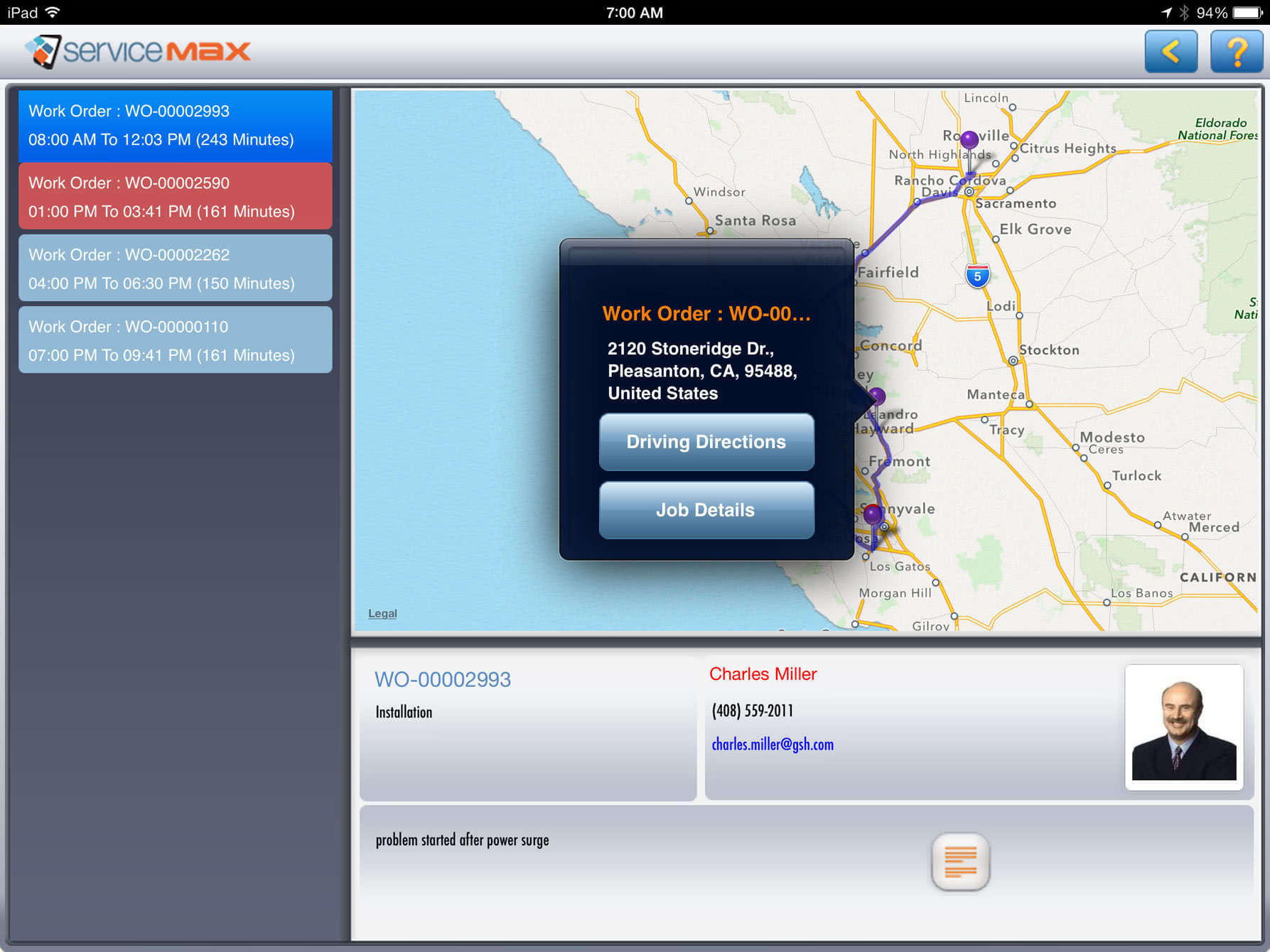Field Service Management
Behind the Software Q&A with ServiceMax CEO Dave Yarnold

Think of every time a company has sent out a technician to your home or office to service a problematic device and you’ve got a very good image of field service. Despite the ubiquity of field service across tons of different industries, a lot of organizations, especially smaller ones with shorter reach, manage their field service branch using amazingly primitive means (think whiteboards and clipboards).
Developers like ServiceMax have taken note and are moving into a field that’s been almost untouched by disruptive technology up until this point. We talked to ServiceMax CEO Dave Yarnold about bringing automation to this low-tech sector.
What was the impetus behind ServiceMax? What drove this team to want to get involved in putting together a field service management product?
Dave Yarnold: For me it goes back into the 90s. I was actually with a great company in the 90s called Clarify. We were really one of the pioneers in the customer support software space. We did incredibly well, we went through an IPO, the company grew over a five-year period from $10 million to $250 million in revenue. We were acquired at that point, and it was a wonderful acquisition. I think Nortel paid $2.2 billion for the company.
But those of us who were at the company had a lot of passion for what we were doing. We were very focused on customer support, specifically field service. It was a great product, and we had great customers.
So the company gets acquired in 2000 along with some of our competitors. And really, CRM turned from two markets – one that was focused on customers in support and service, and one that was focused on automating salespeople. Really with the success of Siebel and the subsequent success of Salesforce, CRM turned into a great big sales force automation market. This really cool market, which focused on the service side of the business became dormant and stagnant, in my humble opinion.
Download the 2014 Top 10 Field Service Management Report
After the acquisition I went off, and I ended up being the first VP of Sales of SuccessFactors. We grew that company through an IPO. It was sold to SAP. It was a wonderful run. But in the middle of all that, there was a guy who used to work for me at Clarify who met some guys who were building a field service product based on the Salesforce platform. He knew my passion for the subject and for that company.
To make a long story short, he brought us together. It was a great product and a great idea and a great, unmet market need. We joined forces back in the early part of 2009. About a year or so after the product had been initially developed, we came together with the idea that this is a massive market that’s been completely neglected by the software industry, and that we could create a huge company out of it. We’ve grown on average about 150 percent per year during the last five years. It’s an amazing opportunity going forward. But the best part is that nobody is really doing what we are doing.
Your profile mentions that what you are doing is rethinking field service management. What does it entail to rethink that kind of service?
Field service is the whole process of taking care of customers after they buy your product. Basically it’s maintaining the equipment, repairing the equipment, replacing the equipment–whether it’s any device in a hospital room, an office building, an airport, wherever. Equipment is everywhere, and it needs to be maintained.
Traditionally, companies have looked at service as an expense. We’ve all heard that: service as an expense. The whole objective of organizations–until the last decade or so–was to reduce the cost of service. What companies are finding now is that that’s not really the objective of service.
The objective is to grow your customer relationships and grow service revenues. We found that the average manufacturing company’s share of revenues attributable to service back in the early 1990s was less than 10 percent. Now, on average, it’s more than 40 percent of the company’s revenues if they are a manufacturer. Companies have discovered that service revenues are a great way to grow, and it’s a great way to get closer to your customers and make them into loyal customers.
Companies have been doing that through brute force with no technology or limited technology. Here we come with a platform that enables all of that. It enables companies to understand who their customers are about what they bought from them, what the relationships are, send the right person with the right part at the right time; and do it all on a fantastic mobile device like the iPad.

What are some of the key inefficiencies or dysfunctions that a lot of companies are they getting wrong? How does ServiceMax help out with those problems?
I’ll answer that question, but let me start with a little bit of market sizing to give you a sense of how big the opportunity here is. Everybody recognizes the CRM market is a huge market. I think Gartner called it an $18 billion market last year. The majority of those revenues are coming from automated salespeople–basic sales force automation. In the US, there’s about 6.6 million field salespeople. It’s a huge industry. In the US, there are about 5.5 million field service people.
When you compare the two markets, they are pretty similar. Yet in field service, there is no brand name standard solution. Many companies have put together a lot of homegrown solutions. They’re running their schedules on whiteboards with dry-erase markers. We are going from almost no automation or a homegrown pieces of software to something where we give them all the data about all their customers and all the agreements of those customers.
Let me give you one example: one of our earliest customers is a company called Pentair. They provide pool filters. Every week they would get thousands of calls from their dealers. These customers were consumers and commercial folks. Because they had grown over time very quickly and acquired a lot of companies, they had absolutely no idea who among their customers was on warranty wasn’t on warranty.
They’d get a call from their partner–a dealer, and the dealer would say, “The filter is broken. I need you guys to help and ship me a part.” They would just do it because they wanted to maintain great relationships with their customers and their dealers. But after they implemented ServiceMax what they figured out was that on 50 percent of those calls they actually shouldn’t have been providing free service and parts. Half of all their calls.
We did a survey of our customers earlier this year and we found a whole bunch of relevant data points. On average our customers increased their revenues by 14 percent after implementing ServiceMax. It increased their technician productivity–and these are their numbers, they came to us–by 31 percent.
I’ll give you another one: Coca-Cola Enterprises is using our solution on iPhones across Europe. They go out and service all the fountain machines, the coolers, all the stuff that handles Coca-Cola products across Europe. They are able to make the repairs, and record all the data on their iPhones. In addition to that they’re able to look around, at a McDonald’s for example, and see the fryer machines and coffee machines. They think, “Maybe we should give these guys a bid to do service on that stuff, too, because we’re pretty good at that.” They’re able to generate an actual lead for the sales folks to followup on.
Why is there so little automation in this sector as of yet? Is it something that’s just institutionalized? Or the fact that the prerogative for so long has been to drive down costs as low as possible?
In my mind, there are two factors. One is what you just hit on, the fact that the industry has evolved from a cost-focused one to more of a top-line growth and profit perspective. That has happened, and I think it has happened quickly, and the technology is a little bit behind.
The second factor is that the technology to make the promise of customer service a reality now exists. For years field techs have been saying, “wouldn’t it be great if we had a device that we could take with us to our customers and know everything about them, be able to be informed, have all the manuals online, training videos, all that kind of stuff?” They could never do that before. It’s really hard to design a local solution to operate while it is connected to the Internet and also while offline. You have to do that for field techs though, because they end up in bizarre places. We have people fixing power generators in the middle of the desert, where there is just no cellular connectivity. There are people that are in basements of hospitals where there’s no cellular connectivity.
Now we finally have the technology to provide the apps for great devices, and then update those apps and synchronize them in the cloud. We have an element of our solution that we call ServicePulse. It enables the techs to use a collaborative construct to basically share what’s going on at their customer site. They can send out a message to the effect of, “Has anybody ever seen this? Let me send a picture or video of it.” It enables everybody in the company to collaborate in taking care of the customer.
I can think of two types of technologies that are critical for this to be viable. One of them is the cloud, and another is robust mobile devices. What else would you say is critical?
Those are the two factors at the top of my list. There’s also a larger shift of technologies moving onto the cloud. We are seeing this wholesale shift away from old on-premise systems. I can’t tell you how many times I’ve been in meetings over the last 25 years where leaders had great ideas for things they could do to enhance their business.
In service for example, coming up with a way of rolling out a new contract type where you can provide a different level of service to a customer, charge more for it and have the customer see the value in that. When you have a cloud-based solution that is so flexible and agile that you can do that in hours, versus old style on-premise technologies where that could be a six or nine-month project. At the end of that period of time, it might not even be an applicable need anymore.
This wholesale shift into cloud-based technologies is something you see in every part of the software world today. We’re certainly benefiting from that. The really cool thing about this is that, certainly, lots of software segments are being transformed, but, I think we’ll look back five or ten years from now and say, “OK, there are some segments that were transformed, and there were some industries that were actually created by the proliferation of mobile and cloud.” This is going to be one of them.

Is it an uphill climb selling this kind of solution to prospective field service clients, or do they get it intuitively?
It’s pretty interesting. The reaction we get is usually, “Really? You guys can do that? We had no idea that this was possible.”
Once folks get over that hurdle–the skepticism about what we might have to offer–they start looking at the platform, especially the capabilities we have around mobile and different mobile devices, the ability to extract data on a real-time basis about their entire service organization, there’s a lot of enthusiasm. There’s a lot of enthusiasm at high levels.
I had the president of the Asia-Pacific region of a very large company which has about 15,000 field techs. The company has been around for about 130 years. They realize that service is where they can differentiate themselves, doing business as they say, “Different than we’ve been doing it for the last 50 years.” They want to double their service business over the next three years, and we’re the platform that is enabling them to do that. He called me the other night from Singapore, and I thought, “I wonder what’s going on.”
He said, “Look, I just want you to know how excited we are about this project. Our entire global organization is watching what we’re doing in Asia-Pac and everybody is chomping at the bit wanting to get in on this as well.”
The reaction is really cool and really gratifying, and surprising in its scope. Initially we have that skepticism, and then when we kind of walk through what we can do, the enthusiasm–even at places like Coca-Cola Enterprises and GE and Pitney Bowes–it’s really pretty amazing, these big companies are getting so fired up about our platform.
For yourself in particular, I was curious, how has your previous experience–at Clarify and SuccessFactors–informed what you are doing right now at ServiceMax?
The really cool thing about this is that over the past 25 years I have been able to work with a lot of great people. I’ve worked with some great leaders in the industry, and now I’ve had the opportunity to recruit some of the best people that I’ve ever worked with. They are here. This is a great team.
In a board meeting a couple weeks ago, while some of my team members were presenting, one of my board members slipped me a note in the middle of the board meeting and it said, “Your team is ‘effing unbelievable.”
The first thing is that it’s just awesome to be able to recruit a bunch of wonderful people with whom you have a common set of values. You realize, having worked together, what really matters, what’s really important to you, and the way you do business. We have a very specific set of core values: to be able to collaborate with respect, make customers into raving fans, being the best partner for every single one of our partners.
Because we’re all so aligned we’re also hiring unbelievably great people. That kind of gives us a leg up on a lot of startups in that we have a really clear idea of what we want to accomplish and what hiring people to help us accomplish that means.
What would you view as the biggest challenge that you are facing currently? How are you addressing it?
The biggest challenge we have is the overwhelming demand for what we are doing. This is one of those applications that you don’t just download off the Internet and fire up on an individual basis. It affects large organizations. They are very process-oriented. They are very rules-driven. The way that you take care of your customers is to have a lot of very specific processes and structures to do it.
We have to advise our customers on how to do that. Since growth has been accelerating, we have been recruiting partners for, I would say, the last year and a half. Getting our partners up to speed to where they can provide the same level of customer delight we’re focused on delivering is a challenge, but they are going to get there. We want them to get there faster, and we want more of them to be able to do it. Recruiting those partners, training them and imparting that same sense that it’s not enough to just get a customer live. We want them to be delighted with the software. We want them to be raving fans of ServiceMax.

How big is your partner network right now? What has the experience been like in getting them all up to speed?
The great thing about the service market is that service is the same if you are in Europe or Asia versus North America. It’s the same basic business process where a customer picks up the phone and says, “You know that thing that you sold me? It’s not working. Can you send somebody out here to fix it?”
That happens in any language. It’s a wonderful global business process, and we sell solutions to companies all around the world. Obviously we’re a small company, so we can’t be everywhere yet. We’ve had to go out and recruit partners in Australia, India and all across Europe in native languages; German partners, French partners, folks in the Nordics, the UK. It’s been great. They recognize that this is a big market, but we have a team now working globally just to recruit and onboard our partners. It’s going well. We have 16 partners now around the world. We have partners in all different regions. I wish it was going faster just so we could keep up.
Did you plan on going multinational this quickly?
It was almost instant, and it wasn’t by plan. Of our first three customers out of six one was in Kuwait, one was in Saudi Arabia, and one was in New Zealand. Quickly thereafter we got our biggest customer, which was Electrolux in Brazil. 2000 field techs in Brazil, one of the largest manufacturers in Brazil at the time.
We were forced to instantly start thinking global, multi-language. We needed to be a global company from the get-go. It was great. In retrospect it forced us to do a lot of things in a way that wasn’t in our original plan.

How has this industry changed since you guys got started in terms of business or technology?
One of the biggest things that happened was a little over three years ago when the iPad came out. I remember about a month after the iPad was out I was at a CEO conference. I didn’t have an iPad yet. I thought, what is this new kind of in-between device? I have an iPhone and I’m happy with that.
I remember the session as a kind of interactive session, and a guest was talking about trends in technology. At one point he asked, “How many of you guys have iPads?” I turned around and saw half the CEOs in the audience were carrying iPads around. Then I started watching them, and they were carrying them as if they were the most precious things in their existence at that point. It was kind of funny. I came back from the meeting and told my team we have to build an iPad app because it’s CEOs who are buying into this device. It’s the perfect user interface and size.
Where do you see field service management going in the near future? What kind of challenges and opportunities are on the horizon?
I hope and believe that we will go through a similar evolution as other industries. I can still remember when there wasn’t an ERP industry. There were individual apps and data. I was there before there was a CRM industry. That became a huge industry.
I think this whole field service industry is going to be another one of those big categories. You have some suite providers like us that do end-to-end management of field service, and then you have other folks that will specialize in other areas whether it’s knowledge management or inventory management. They are very specific deep dives into different functional areas. My hope is that it’s going to become a massive industry based on the number of users out there globally, and that we will be the name associated with that industry.
We want to be the brand name people associate with this industry the same way Salesforce is synonymous with CRM. I think we’re off to a great start, and we have the opportunity to build a company with great brand appeal in a global market. That’s what we’re trying to do.
Read more about ServiceMax’s field service management software at www.servicemax.com. For more on field service management solutions visit our Field Service Management Research Center page.






